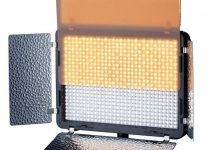Working with style mattes and matte transitions inside DaVinci Resolve 12 might seem a little bit daunting the first time when you need to deal with those, however, the workflow isn’t that different in comparison to other NLEs. Kevin P. McAuliffe from RampantMedia shows us how to use such graphic elements to stylize an edit in DaVinci Resolve 12.
Unlike other editing applications, the approach towards stylized mattes (or any other type of mattes) in DaVinci Resolve 12 is indeed a little bit unconventional. For instance, one of the common mistakes editors make is dropping those elements directly in the Media Pool and treating them as a regular clip. Instead, you should select these pieces and import them in the Media Pool as Mattes. To do so right-click on those clips in the Media Storage browser and select Add to Media Pool as a Matte. Here what else you need to consider when working with mattes.
Once the Matte clips are imported in the Media Pool you’ll notice a small icon in the bottom left corner of each shot that is basically representing a Matte Key. As any other clip in the Media Pool, you can still get a preview by simply skimming over the given shot if you need to. The next step would be to access the Edit Page and continue further with applying the Matte to your footage.
First, you need to drag and drop the regular footage on your timeline. After, select the shot where you want to apply the Matte. In the Color Page of DaVinci Resolve 12 click on the default Node and by right-clicking on it navigate to the bottom of the drop-down menu where under Add Matte select the one that you want to apply to your shot.
The tricky part here is that you also need to add an Alpha Output by right-clicking in the Color Page and then connecting the Matte to the Alpha Output just as shown in the video tutorial above.
One of the downsides of this workflow is that you actually are connecting the Matte to a particular shot. So, if you want to add multiple clips in different parts of a Stylized Matte and modify their position or scale in the frame then the workflow would be a little bit different.
After dropping the clip in your Timeline instead of attaching the Matte directly to it right-click on the clip and create a Compound Clip to this certain shot. If you want to modify the position of the clip go to the Edit Page, select the shot and open the Compound Clip. Now by accessing the settings in the Inspector you can change the position or rotate the clip, zoom in or zoom out, or modify any other parameter as required.
The workflow of applying Matte transitions between two shots is very similar. Just make sure that the clip where the transition needs to be applied is placed on the upper video track. Then again in the Color Page select the shot, right-click and add a Matte, then create an Alpha Output and connect the Matte to the just created Alpha Output. If you want to alter the position of the transition, in the Edit Page simply drag the clip in either direction directly in your Timeline and place it anywhere you’d like.
[source: RampantMedia]
Disclaimer: As an Amazon Associate partner and participant in B&H and Adorama Affiliate programmes, we earn a small comission from each purchase made through the affiliate links listed above at no additional cost to you.



